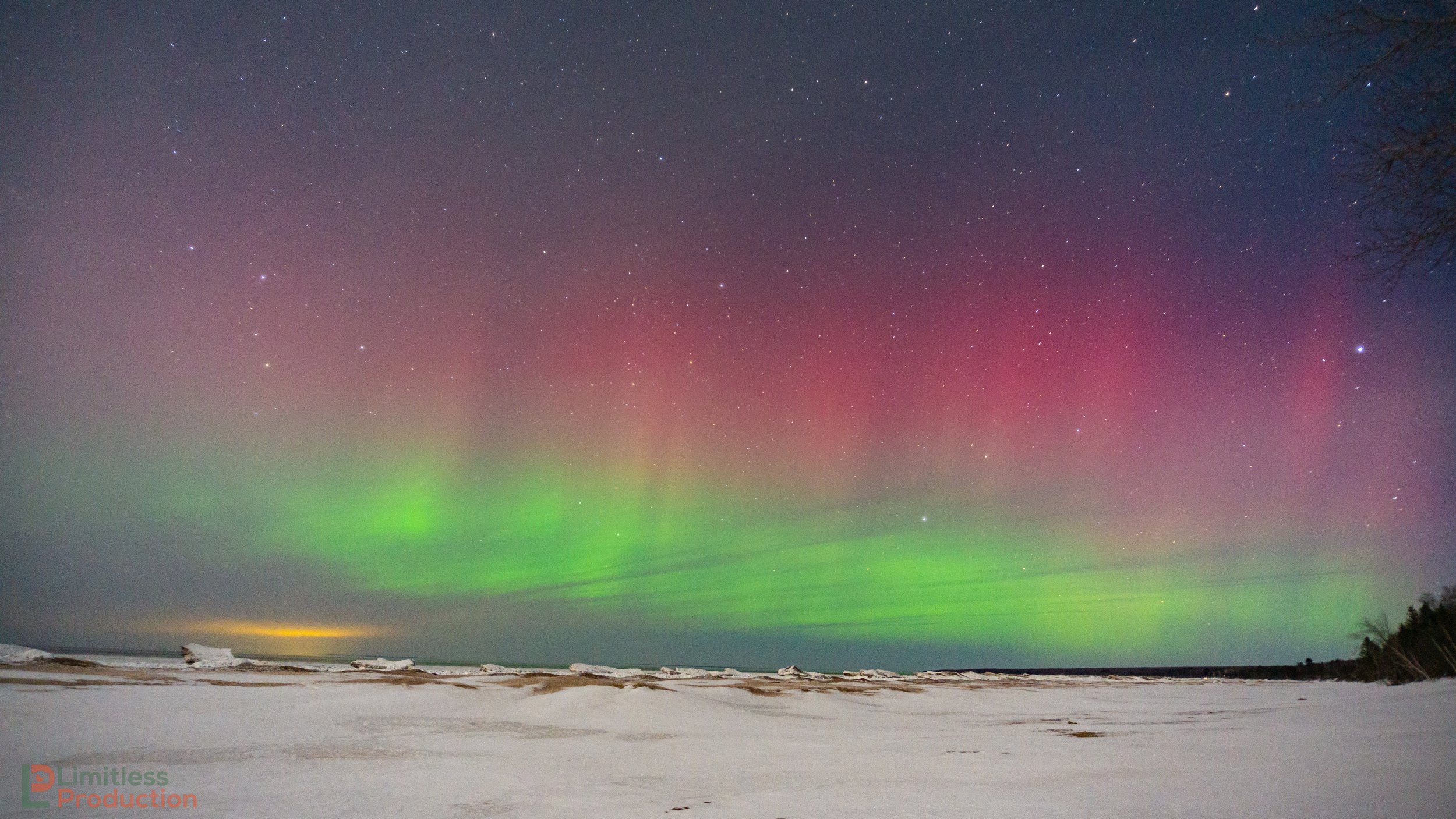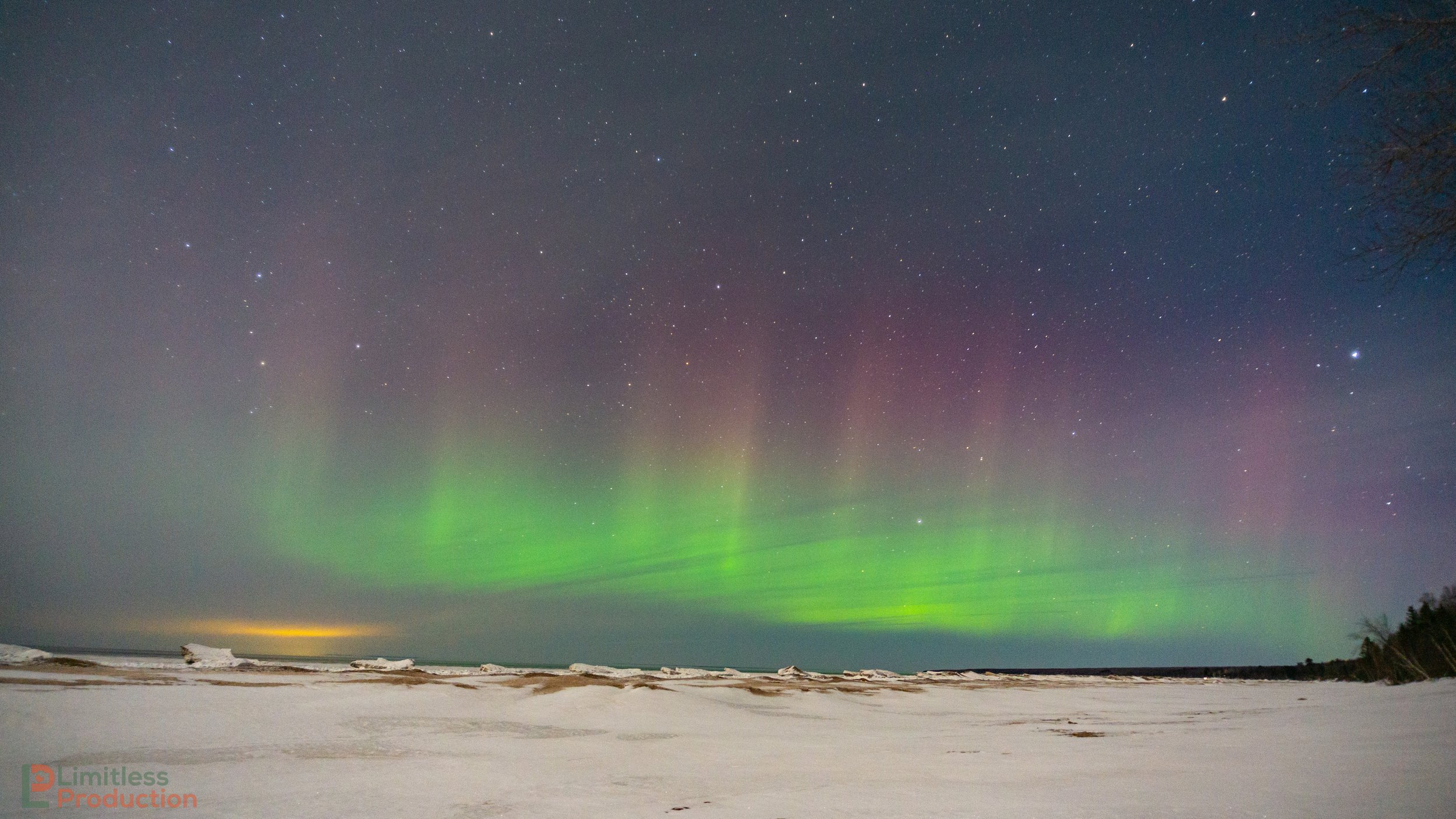More chances to see the Northern Lights in the coming weeks - Is solar activity increasing?
A vibrant and breathtaking Northern Lights display occurred Saturday night into early Sunday morning across parts of the Midwest the weekend of April 9th and 10th which caught many by surprise as guidance had only hinted at a low chance of them being visible. In the timelapse video above, taken from Misery Bay, Michigan between 10 PM on Saturday, April 9th and 12:45 AM Sunday, April 10th you can see what started out as a relatively calm and faint lights display, quickly evolve into a breathtaking, and vibrant lights display.
The lights display over the weekend left many both angry they missed this event, but also a few scratching their heads as to what caused this eye-popping surprise as many received an alert not too long before it occurred that only a low chance of seeing the Lights was possible.
Upon further investigation, it appears that High Solar Wind Streams (HSSWs) interacted with a southern trajectory of Coronal Mass Ejection (CME) causing it to be stronger overall than it was previously predicted. In addition to that, the solar wind in the Bz direction was more polarized (negative) than it was previously thought to be. What this means is the solar wind was able to attach itself better to the Earth’s magnetic field allowing for the Northern Lights to develop more easily.
The Solar Cycle - Coming out of a Solar Minimum
The Solar cycle is usually an 11-year cycle where the Sun’s magnetic field - the north and south poles - actually flip. They track a cycle based on the number of sunspots they can count. Each cycle begins with the least amount of sunspots, otherwise known as a solar minimum. The middle of the cycle is when we see the most sunspots, otherwise known as the solar maximum.
We currently find ourselves coming out of a solar minimum from cycle 24 and “slowly” working into the solar maximum of cycle 25. I say “slowly” because this is typically an 11-year cycle, but based on the current observations compared to the forecasted trend that you can see below, the solar trends and activity have actually been above what was forecasted since the last minimum around 2020.
It was initially forecasted by the Solar Cycle Prediction Panel, which is made up of members from NOAA, NASA, and the International Space Environmental Services that Solar Cycle 25 was going to be a rather weak cycle just like the previous Solar Cycle 24. Since the beginning of Solar Cycle 25, it has outperformed those predictions and has in fact been stronger than most were predicting. The solar maximum is forecast to be around July 2025 with a maximum number of sunspots estimated to be around 115. When you factor in the error, that maximum could range between 105-125 sunspots at their peak between November 2024 and March 2026.
Tips for capturing the Northern Lights
As we come out of this solar minimum with Cycle 25 now stronger than it was previously forecasted to be, it is likely safe to assume our chances of seeing the Northern Lights should be on the increase - weather permitting. We often get questions from people about how to capture the Northern Lights, or what settings we use. So we decided to put together a little guide in the hopes it might help more of you be able to also capture some stunning images. You can find that guide here: Tips for Capturing the Northern Lights with your Cellphone and DSLR Camera
If you find this guide helpful, please tag us in your photos or send them our way! We would love to see what you captured!
Northern Lights Prints!
We wanted to finally mention we have prints available for purchase from the surprise Northern Lights event in the Upper Peninsula of Michigan on April 9-10th. Get your prints now, and add some breathtaking to your walls today! We have 10 prints available, three examples below. Check out our store here: Northern Lights




